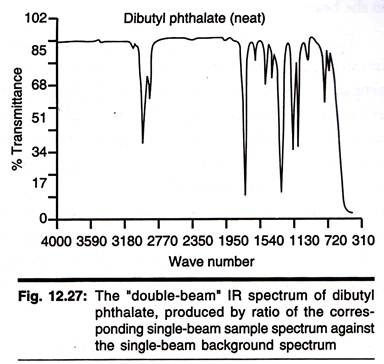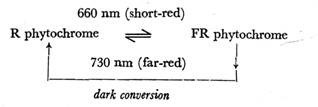The following points highlight the top five types of chemical bonds. The types are: 1. Electrovalent or Ionic Bond 2. Covalent Bond 3. Co-Ordinate Covalent Co-Ordinate Dative 4. Odd Electron 5. Other Weak (Interactions).
Chemical Bond: Type # 1.
Electrovalent or Ionic Bond:
The electropositive elements (like Na, K, Ca, Ba, Sr, Mg, etc.) donate electron(s) and changed into cations, while the electronegative elements (like oxygen, sulphur and halogens) accept electron(s) and changed into anions. For example,
Cation formation is favoured by low ionization energy.
Anion formation is favoured by high electron affinity. The cations and anions are held together by electrostatic attraction forces or coulombic forces.
Combination of cations and anions is an exergonic process. The energy released in the reaction of 1 gm. mole of a crystal from the gaseous ions is called lattice energy of that crystal. Higher the lattice energy of a crystal, the greater is the ease of its formation.
An ionic bond is formed only if sum of electron affinity of the anion-forming element and the lattice energy exceeds the ionization energy of the cation-forming element. The number of electron(s) lost or gained by the atom to>form ionic compound is known as valency of the respective atom in that compound. For example, in the above example valency of sodium is + 1 while that of chlorine is -1.
There are certain factors that favour the formation of ionic bond as follows:
(i) One of the atoms (the metal) must have a low ionization energy so that it easily loses its electron(s).
(ii) The other atom (non-metal) must have the capacity to hold the extra electrons, i.e., it must have high electron affinity.
(iii) One of the atoms (metal) should be larger in size, while the other (non-metal) should be smaller in size.
(iv) The combining elements should differ by at least 1.9 in electronegativity.
(v) The electrostatic attraction between charged ions in the crystal, i.e., lattice energy, should be high.
(vi) The cation and anion should have inert gas electronic configuration.
In general, the metals (elements on the left of the periodic table) have low ionization energies and non-metals (elements on the right of the periodic table) have high electron affinity. Ionic bonds are favoured between these elements.
The ionic compounds are made up of ions and are highly soluble in solvents with high dielectric constant, such as water (dielectric constant = 80) and other polar solvents, but insoluble in non-polar solvents like benzene, ether, etc. Ionic compounds dissociate into water. The ions have a tendency to become hydrated and release hydration energy.
Normally hydration energy is sufficient to overcome the lattice energy and thus the ions are separated from each other forming a solution. Some ionic compounds, on the other hand, are sparingly soluble (almost insoluble) as the lattice energy is higher than the hydration energy, e.g., BaSO4, PbSO4, AgCl, AgBr, Agl, Ag2CrO4, etc.
Ionic compounds have high melting and boiling points due to strong electrostatic attraction between ions of their crystals. They conduct electricity in solution as well as in molten form (fused state).
In solution, ionic compounds show ionic reactions, which are quite fast and instantaneous. In crystals of the ionic compounds the constituent units are ions and not molecules, arranged in a regular pattern to form the crystal lattice.
Chemical Bond: Type # 2.
Covalent Bond:
Covalent bond is formed between two atoms of comparable electronegativity. In the formation of a covalent bond, equal number of electron(s) is (are) shared between the two concerned atoms. These shared electrons become the common property of both atoms. Sharing of electrons may occur in three ways.
(i) When each atom contributes one electron and hence the contributed pair of electrons is shared by each atom. The bond formed is known as single bond and is represented by ‘-’.
Other common examples are NH3, BF3, alkanes, halogen acids, etc.
(ii) In some cases each atom contributes two electrons and thus two pairs of electrons are shared by each atom. The bond is known as double bond and represented by ‘=’. Common examples are CO2, O2, olefins, etc.
(iii) Similarly, triple bond (=) is formed by the sharing of three pairs of electrons (three electrons are contributed by each atom). Common examples are N2, alkynes, etc.
Compounds having covalent bond(s) is (are) known as covalent compounds.
The covalent compounds show the following characteristics:
(i) The compounds are molecular in nature.
(ii) The covalent bond is a weaker bond the strength of which decreases with the increase in bond length. Again, covalent compounds have low melting and boiling points due to weak intermolecular forces like van der Waals force, hydrogen bond, etc.
(iii) Covalent compounds are insoluble in water and soluble in non-polar solvents like benzene. In solution, these compounds do not produce ions and hence are bad conductor of electricity.
(iv) Covalent bond is rigid and directional. Hence covalent compounds can show structural and space isomerism.
(v) They show molecular reactions which are quite slow and complex.
Chemical Bond: Type # 3.
Co-Ordinate Covalent, Co-Ordinate Dative Bond:
This is a special type of covalent bond in which both the electrons forming the bond are contributed by only one atom but shared by both. So this bond formation involves one-sided sharing of a lone-pair of electrons.
The atom that donates the electron pair is known as donor and the atom which accepts the electron pair is called the acceptor. The dative bond is shown by means of an arrow (→) pointing away from the donor atom to the acceptor atom. Common examples are SO2, H2O2, H2SO4, NH+4, SO3, etc.
Chemical Bond: Type # 4.
Odd Electron Bonds:
There is a very small number of stable compounds and ions which have unpaired electron(s).
In these molecules, the two atoms are linked with each other by means of a bond that has odd number (generally 3) of electrons and hence such bonds are known as three- electron or odd electron bonds and the molecules as odd electron molecules. Important examples of such compounds having unpaired electron(s) are NO, NO2, ClO2, O2, O2– (superoxide radical), etc.
Chemical Bond: Type # 5.
Other Weak Bonds (Interactions):
Besides the strong covalent and non-covalent bonds there are many other weak electrostatic forces that play a very important role in determining the structures of most biomolecules include hydrogen bonds, van der Waals forces, dipole – dipole Interactions and London dispersion forces. Strong and weak bonds are used to indicate the amount of energy in a bond.
Strong bonds such as covalent bonds found in biomolecules require an average of 100 kcal mol-1 to be cleaved and hence are stable and seldom break under physiological conditions.
In contest, weak bonds have energies of 2 to 7 kcal mol-1 and are easily broken. Weak bonds are transient and each bond can form and break within a small fraction of a second. This transient nature of non-covalent interactions gives flexibility to the macromolecules such as proteins and nucleic acids, which is crucial to their function.
(i) Hydrogen bonds can be formed between charged and uncharged molecules. The hydrogen atom has been found to possess the special property of forming weak bonds with certain electronegative atoms to which it is not directly attached by formal chemical bonds. In a hydrogen bond, a hydrogen atom is shared by two other atoms.
The atom to which the hydrogen is more tightly linked is called the hydrogen donor, whereas the other atom is called as the hydrogen acceptor. The acceptor has a partial negative charge that attracts the hydrogen atom. In fact, a hydrogen bond can be considered as an intermediate in the transfer of a proton from an acid to a base. It is a special kind of dipolar interaction.
In general, a hydrogen bond can be represented as D – H……. A, where D – H is a weakly acidic donor group such as O – H, N – H, or sometimes S – H, and A is a weakly basic acceptor atom such as O, N, or occasionally S. Characteristically the H………. A distance in hydrogen bond is at least 0.5Å shorter than the calculated van der Waals distance.
The donor in a hydrogen bond in biological systems is an oxygen or nitrogen atom that has a covalently attached hydrogen atom. The acceptor is either oxygen or nitrogen. Hydrogen bonds are stronger than the van der Waals bond but much weaker than covalent bonds. The strongest hydrogen bonds are those in which the donor, hydrogen and acceptor atoms are collinear.
The hydrogen bonds are highly directional and more specific in biomolecules than other weak bonds as they require particular complementary groups that donate or accept hydrogen. In proteins and nucleic acids both intermolecular and intermolecular hydrogen bonds are found.
(ii) The non-covalent associations between neutral molecules, are collectively known as van der Waals forces. These forces arise from interactions among permanent or induced dipoles. Interactions among permanent dipoles such as carbonyl groups are much weaker than ionic interactions. A permanent dipole can induce a dipole moment in a neighbouring group by electrostatically distorting its electron distribution.
(a) Interactions Between Permanent Dipoles:
(b) Dipole – Induced Dipole Interactions:
Such dipole – induced dipole is weaker than dipole – dipole interactions.
(iii) When transient dipole moment polarizes the electrons in a neighbouring group and attract each other, it is called London dispersion force. This is a small and randomly oriented dipole moment arising from the rapid fluctuating motion of the electrons of nonpolar molecules.
This force is extremely weak and fall off rapidly with distance. These forces help in determining the structures of biological molecules having closely packed groups.









